 History
History  History
History  Creepy
Creepy 10 More Representations of Death from Myth, Legend, and Folktale
 Technology
Technology 10 Scientific Breakthroughs of 2025 That’ll Change Everything
 Our World
Our World 10 Ways Icelandic Culture Makes Other Countries Look Boring
 Misconceptions
Misconceptions 10 Common Misconceptions About the Victorian Era
 Mysteries
Mysteries 10 Strange Unexplained Mysteries of 2025
 Miscellaneous
Miscellaneous 10 of History’s Most Bell-Ringing Finishing Moves
 History
History 10 Great Escapes That Ended Right Back in Captivity
 Weird Stuff
Weird Stuff 10 Fascinating Things You Might Not Know About Spiders
 Food
Food 10 Everyday Foods You Didn’t Know Were Invented by the U.S. Military
 History
History 10 Most Influential Protests in Modern History
 Creepy
Creepy 10 More Representations of Death from Myth, Legend, and Folktale
 Technology
Technology 10 Scientific Breakthroughs of 2025 That’ll Change Everything
Who's Behind Listverse?

Jamie Frater
Head Editor
Jamie founded Listverse due to an insatiable desire to share fascinating, obscure, and bizarre facts. He has been a guest speaker on numerous national radio and television stations and is a five time published author.
More About Us Our World
Our World 10 Ways Icelandic Culture Makes Other Countries Look Boring
 Misconceptions
Misconceptions 10 Common Misconceptions About the Victorian Era
 Mysteries
Mysteries 10 Strange Unexplained Mysteries of 2025
 Miscellaneous
Miscellaneous 10 of History’s Most Bell-Ringing Finishing Moves
 History
History 10 Great Escapes That Ended Right Back in Captivity
 Weird Stuff
Weird Stuff 10 Fascinating Things You Might Not Know About Spiders
 Food
Food 10 Everyday Foods You Didn’t Know Were Invented by the U.S. Military
10 Places Around The World You Wouldn’t Want To Live
When your neighbors party late into the night or a garbage truck wakes you up two hours before sunrise, you might curse your neighborhood. We’re not all fortunate enough to have rolling emerald lawns and central air conditioning, but most people reading this have access to the most basic of amenities: heat, running water, electricity, and Internet access. Unfortunately, there are many people throughout the world who are not so blessed—men, women, and children crammed into slums ruled by crime and ravaged by drugs and disease.
10Cité-Soleil, Port au Prince
Haiti
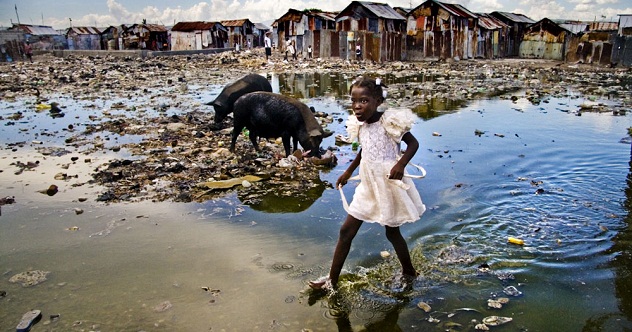
On the outskirts of Port au Prince, Haiti is Cité-Soleil (“Sun City”), a foul slum ruled by gangs and sitting in a pool of its own squalor. Cite Soleil has no sewage system and is composed of hovels. Garbage and excrement sit in stagnant, mosquito-infested puddles. AIDS is prolific, and the life expectancy hovers in the low 50s. There is no police force, and for years, vicious drug lords and kidnappers controlled the streets. According to the Red Cross, “the shanty town of Cité-Soleil is a microcosm of all the ills in Haitian society: endemic unemployment, illiteracy, non-existent public services, insanitary conditions, rampant crime and armed violence.”
In 2004, the United Nations deployed thousands of troops to Cité-Soleil, where they engaged in numerous gun battles with the gangs. Some vague sense of order was restored, but the area remains a hotbed of violence. To this day, one must pass through an armed UN checkpoint to enter the slum. Cité-Soleil weathered Haiti’s devastating 2010 earthquake well, with many of its structures still standing, but the nearby National Penitentiary was damaged, and 3,000 deadly inmates flooded out in the resulting chaos. They returned to Cité-Soleil with a vengeance, riding motorcycles with assault rifles at the ready. They burned all their arrest records and took back the slum, setting back the progress made by the United Nations.
9 Favelas Of Rio de Janeiro
Brazil
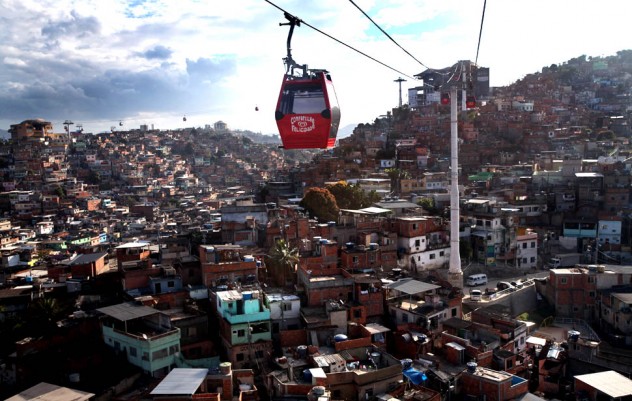
Rio de Janeiro is a beautiful, sprawling city frequently visited by tourists for such events as Carnival and for the white sands of Copacabana Beach. But on the fringes of the city, there exist huge slums called favelas: piecemeal shacks built haphazardly atop each other. The dwellings are tacked together from odds and ends, cast-off bits of lumber, metal, and stone.
Of the approximately 1,000 favelas around the city, one of the most notorious is Rocinha. Rio is a major port for cocaine traffic traveling to Europe, and the favelas are often ruled by heartless drug lords. One of the more colorful characters from the area was Erismar Rodrigues Moreira (street name Bem-Te-Vi, after a Brazilian songbird). His gang carried gold-plated weapons and subjected enemies to “necklacing”— jamming a tire over a man’s head and then setting it aflame. In 2005, Ben was shot down in a police raid. The future of the favelas remains uncertain; since Rio de Janeiro has been accepted as the host city of the 2016 Summer Olympics, the authorities have showed an increasing presence in the streets they once ignored.
8Detroit, Michigan
USA
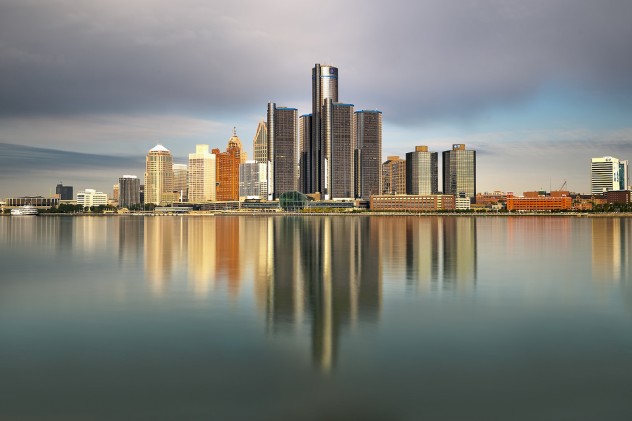
Once heralded as the “Motor City,” Detroit has more recently come to be known as one of the United States’ “Murder Capitals.” The decline of the American automotive industry has left this city reeling. The population has dropped 25 percent since 2000, and many areas have become a wasteland of foreclosed homes, boarded up and selling for pennies on the dollar—some for less than $100. Of course, this is an “as-is, buyer beware” situation if there ever was one. Many of these houses have been taken over by squatters, and the basements of abandoned buildings are a favorite haunt of dog fighters. Detroit has a huge problem with strays; tens of thousands roam the streets, most of them pit bulls.
On July 19, 2013, Detroit declared bankruptcy, approximately $18 billion in debt. Many residents of the city are also feeling the crunch—unemployment rates stand at around 16.3 percent, actually a marked improvement from 2009, when 24.9 percent were out of work. One need look no further to witness Detroit’s crippling poverty than truTV’s hit show Hardcore Pawn, which takes place in the largest pawn shop in the city and often features lines of people out the door trying to peddle their valuables to make rent and keep the lights on. Data compiled from various sources including the FBI and the US Justice Department reveals that the top three most dangerous neighborhoods in America are all located in Detroit. The worst, the area surrounding West Chicago Street and Livernois Avenue is so bad that you have a one in seven chance of becoming the victim of a violent crime there each year.
7Ciudad Juárez
Mexico
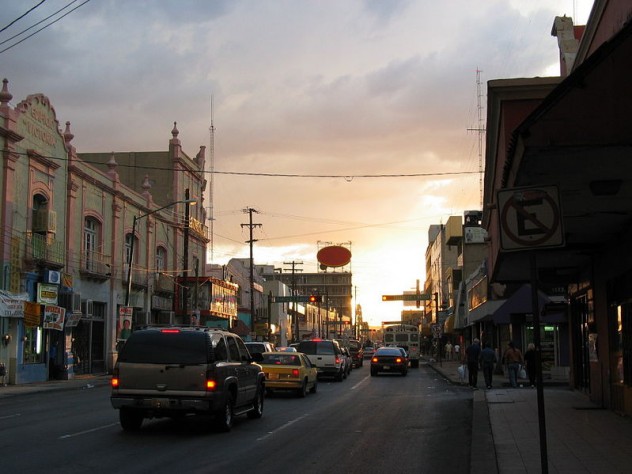
Ciudad Juárez sits just south of El Paso, Texas, the two cities separated by the narrow stretch of the Rio Grande. And yet the difference between these two places is like night and day. In the last decade, Ciudad Juárez has become the epicenter of the Mexican drug war. Rival cartels visit horrifying violence upon each other as they battle for turf, corpses stacking up. In 2009, the city was crowned the murder capital of the world, with 130 murders per 100,000 inhabitants. In truth, the number is probably much higher, as many people simply vanish, buried in mass graves. Police officers are often either too corrupt or too afraid to leave the station.
It is particularly dangerous to be a woman in Ciudad Juárez; sexual assaults are prevalent, and hundreds of women, many just teenagers, have been murdered since the ’90s. Hundreds more remain missing, victims of domestic violence, the drug trade, or worse—some believe that serial killers roam the streets in abundance, their crimes masked by the chaos around them.
6Medellin
Colombia
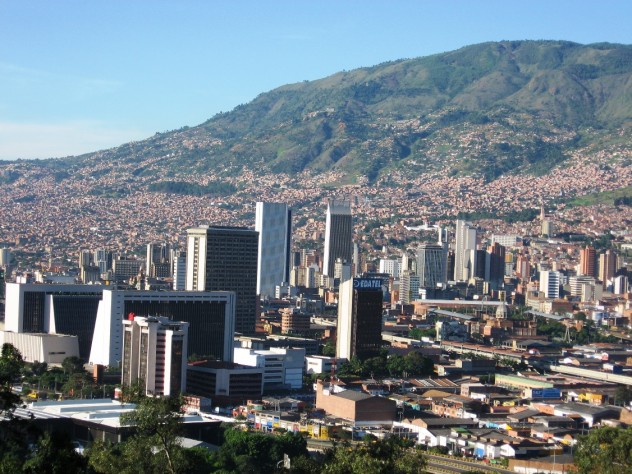
During the height of the cocaine trade in the late ’80s, Medellin was the most violent city in the world, with Pablo Escobar’s cartel and paramilitary groups running rampant. Escobar was killed by police forces in 1993 and crime declined significantly. Unfortunately, there are still thousands of murders here each year. In 2009, there were 2,899 homicides (down from an astonishing 6,500 in 1991), many tied to drug trafficking. Other schemes perpetrated by local criminals include extortion and kidnapping. Tourists are frequently targeted, held for ransom and forced to empty their bank accounts through visits to ATMs. Since 2012, there has been increasing violence between two rival cartels (the Office of Envigado and Los Urabeños) as they scrap over territory.
5 Brownsville, Brooklyn
USA
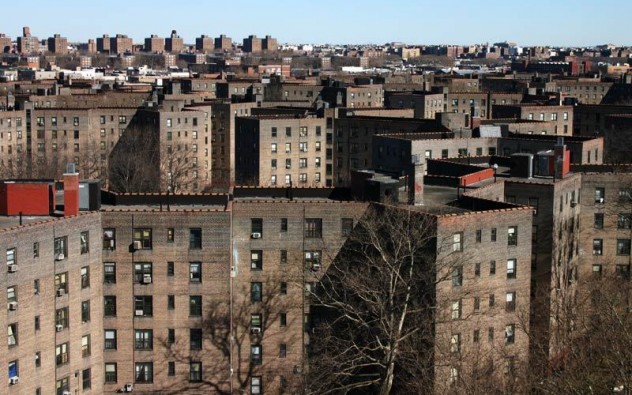
New York City (and Brooklyn in particular) have some sordid corners if one looks hard enough, but Brownsville stands out among the rest. Most of the housing in the neighborhood is made up of projects run by the New York City Housing Authority—huge, low-income apartment buildings where crime is prevalent. While much of New York has been subject to gentrification and tumbling crime rates, Brownsville remains quite dangerous, and possibly the most violent place in the entire city. In this neighborhood, some UPS drivers make their deliveries in the company of an armed guard.
As in many rough areas, much of the crime is related to the drug trade. Luckily, the crack-cocaine epidemic of the ’80s and the ’90s is long over, and things have grown (relatively) more peaceful in the interim, with organized gangs fractured into small fragments of their former power. It can be tough to get by on the streets of Brownsville, and many are forced into making their way with their fists. It is no coincidence at all that this neighborhood was the home of a long list of championship boxers, including Riddick Bowe, Shannon Briggs, Zab Judah, and “Iron” Mike Tyson.
4La Perla, San Juan
Puerto Rico, USA
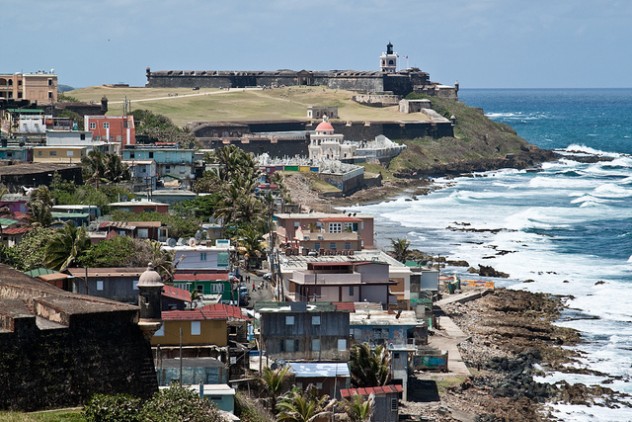
La Perla is a settlement on the outskirts of San Juan that was once home to a slaughterhouse. Today, it is a shantytown known for the proliferation of drugs, particularly heroin imported from suppliers in South America. About 15 square blocks, the streets of La Perla are often omitted from maps of San Juan to keep tourists from traveling there. Despite the abject poverty, La Perla is quite beautiful in many ways, with multicolored homes, breathtaking views, and its own expanse of Caribbean beach. In 2011, La Perla became the site of a massive police raid, netting 114 drug arrests based on an 18-month investigation by the DEA, the Puerto Rico Justice Department, and several other agencies.
3Ferghana Valley
Uzbekistan, Kyrgyzstan, Tajikistan
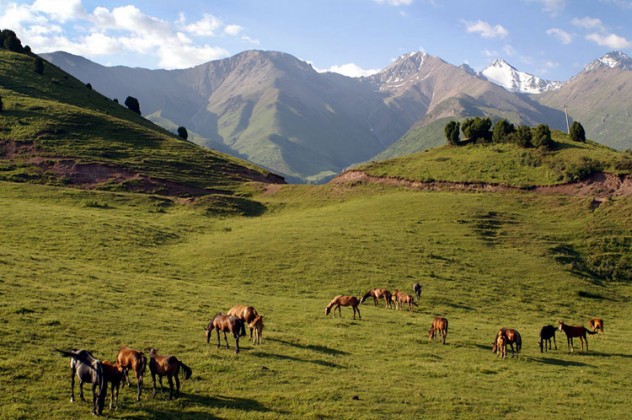
The dissolution of the Soviet Union made for a great deal of tension as the world’s largest country was chopped into independent republics. More than 20 years later, these hostilities remain, some more bitter than ever before. Few places have seen more violence than the Ferghana Valley, an area split in three by the nations of Uzbekistan, Kyrgyzstan, and Tajikistan. The Ferghana Valley is a center of Islamic fundamentalism and home to a patchwork of ethnicities who are known to clash viciously. The economy is deeply flawed, and the government corrupt. Hundreds of thousands of refugees wander the streets, and corpses litter the sidewalks.
Perhaps the most savage event in the area occurred on May 13, 2005, when the Uzbek town of Andijan became the site of a horrifying massacre as the military opened fire on a group of protesters massed in the main square, decrying the economy and the policies of Preident Islam Karimov. The government would later claim the body count at 187, but those present allege that over 1,000 were killed, including many women and children. They claim that many of the bodies were buried in secret mass graves as a way of downplaying the true scope of the carnage.
2Kibera, Nairobi
Kenya
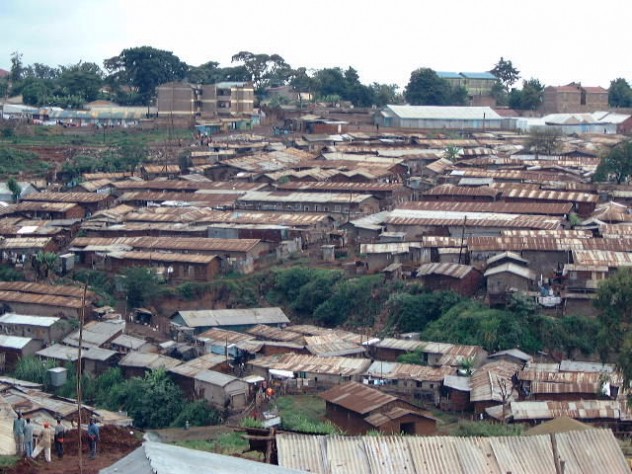
Nairobi is the capital of Kenya, founded by the British as a rail depot in 1899. Today, it is one of the most important cities in Africa, but it is not free from turmoil. On the outskirts of the city sits Kibera, one of the world’s worst slums. Like many such places, Kibera is forsaken by the government. Enterprising criminals tap into Nairobi’s power grid, bringing electricity to a few select places, but for the most part the area is dark. Homes are typically mud and concrete huts with dirt floors. The water is mostly polluted, causing typhoid and cholera, and toilet facilities consist of holes dug into the ground and used by hundreds. Women leaving their homes after dark are often raped.
About half of Kibera’s population is unemployed, and to alleviate their crushing boredom, they often partake in cheap drugs—glue-sniffing is a big problem—or drink changaa, a powerful local brew. AIDS spreads like wildfire in Kibera, with women selling their bodies just to make enough money to eat, and orphaned children, often born with the disease, haunt the trash-choked streets.
1Kowloon Walled City, Hong Kong
China
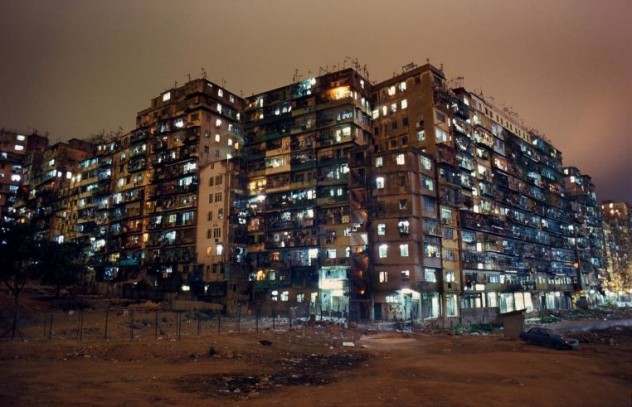
Hong Kong’s Kowloon Walled City was demolished 20 years ago, but it certainly deserves mention. A former Chinese military fort, it became densely populated with squatters in the years following World War II. Inside the walls of the fort, ramshackle high-rises were built largely devoid of creature comforts like heat or running water. In 1987, a survey by the Chinese government indicated there were approximately 30,000 residents inside the tiny 6.5-acre territory—a population density of 3,250,000 people per square mile. As a means of comparison, the city with the highest population density today is Manila, with approximately 111,002 people per square mile.
Greater Hong Kong largely turned a blind eye to activities within Kowloon Walled City. For years, it was governed by the Triads, Chinese mafia members. Police would only enter in large groups. There were high rates of prostitution, gambling, drug use, murders, and opium dens. Only the faintest trace of sunlight filtered down to the muddy streets, and rats proliferated in the ruin. In the early ’90s, the government finally decided to destroy this anarchic slum. An evacuation was ordered, and in March 1993, the demolition began. Today, the area is occupied by Kowloon Walled City Park, a verdant expanse of gardens and monuments.
Mike Devlin is an aspiring novelist.








